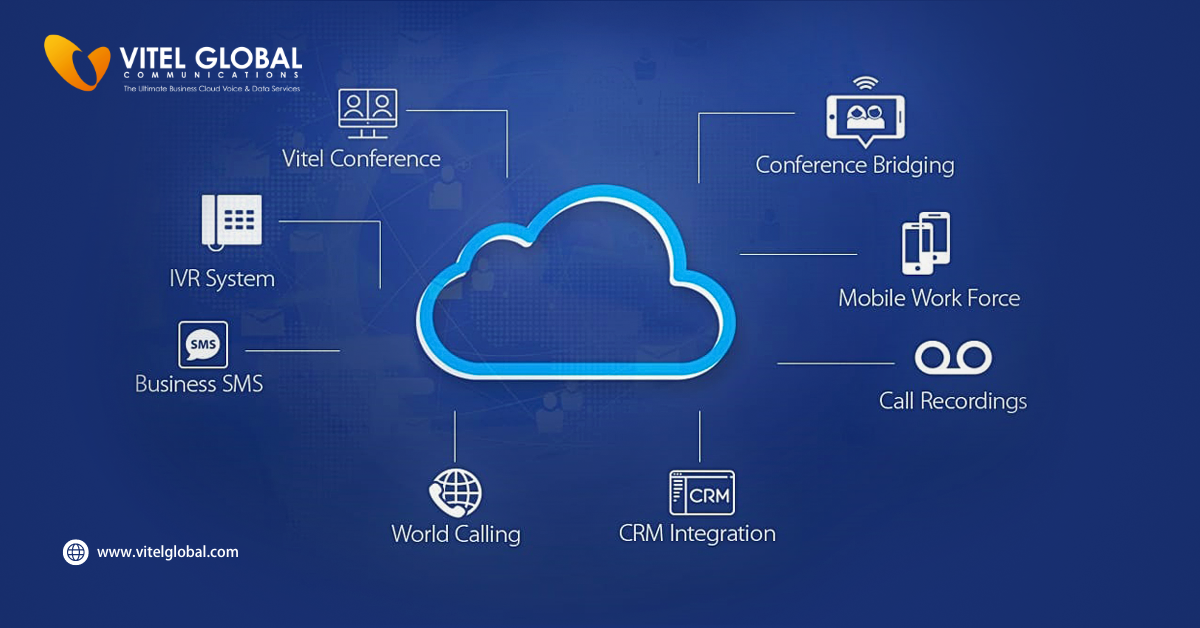How Does UCaaS Differ From Traditional Communication Systems?

4 min read
Unified Communications as a Service, represents a modern approach to communication and collaboration that differs significantly from traditional communication systems. It is a solution that combines various communication and collaboration tools into a single, integrated platform. These tools typically include voice calling, cloud based video conferencing solutions, instant messaging, email, file sharing, and more. It is designed to streamline communication, boost productivity, and enhance collaboration among team members, regardless of their location or the devices they use.
How Does UCaaS Work?
UCaaS operates in the cloud, which means that all the communication and collaboration services are hosted and managed remotely by the provider. Users access these services through applications or web interfaces on their computers, smartphones, or tablets. The key components include:
- Voice and Video Calling: It offers high-quality voice and video calling capabilities over the internet, often with features like call forwarding, voicemail, and call recording.
- Instant Messaging and Presence: Users can send instant messages to colleagues and see their availability status, making it easy to determine who is online and ready to communicate.
- Unified Inbox: Emails, voicemails, and faxes are consolidated into a single inbox, simplifying message management.
- Video Conferencing: Provides the ability to conduct virtual meetings and video conferences, enabling face-to-face interactions even when participants are miles apart.
- File Sharing and Collaboration: Users can share documents, collaborate on projects, and edit files in real-time, fostering teamwork and productivity.
- Integration: The platforms often integrate with other business applications, such as CRM systems, to streamline workflows and access essential data directly from the communication tools.
The Future of Communications
The world of telecommunications is evolving at a rapid pace, and Unified Communications as a Service (UCaaS) is emerging as a key player in shaping its future. It represents a fundamental shift in how businesses and individuals communicate, offering a wide range of benefits and opportunities that are reshaping the telecommunication market.
It is a cloud-based communication solution that integrates various communication and collaboration tools into a single, unified platform. Cloud communication encompasses services like voice calling, video conferencing, instant messaging, email, file sharing, and more. It is hosted and managed by service providers, enabling users to access these tools from anywhere with an internet connection.
Offers numerous benefits for businesses of all sizes by bringing all your communication channels together in one place.
Let’s Go Through the Advantages
Remote Working Flexibility
With it on a cloud-based system, your communication tools can be accessed and managed from anywhere with an internet connection. This means your team can work remotely just as efficiently as they do in the office, using laptops, desktops, or even mobile devices. This flexibility allows your business to adapt to the changing needs of your organization without being limited by technology.
Easy Presence Functionality
It simplifies the process of indicating whether employees are available or unavailable, whether they’re using a mobile device or sitting at their desk. This feature saves time by providing a clear status update, particularly useful in call centers to ensure incoming calls are routed correctly.
Streamlined Application Usage
Transitioning between different software and systems can disrupt workflow and reduce efficiency. The software integrations make it possible to combine your sales and customer support operations into a single application. By eliminating the need for app-jumping and improving overall productivity.
Efficient Onboarding
Gone are the days of extensive training for new employees on outdated systems. Modern cloud-based communication services are user-centric and highly customizable, allowing you to set them up according to your preferences. This makes the onboarding process much smoother and more efficient.
Cost Savings
It simplifies budgeting with straightforward subscription billing from a single vendor. Additionally, it often leads to significant cost reductions compared to maintaining separate or on-premise communication systems.
Effortless Internal Communication
Instant messaging and team chat functions within the platforms facilitate quick and direct internal communication. This eliminates the need for composing lengthy emails for minor requests, which is especially crucial when employees are working remotely or on the go.
What UCaaS Offers That Traditional Communication Systems Cannot?
The Unified Communications as a Service (UCaaS) offers several advantages over traditional communication systems that make it a compelling choice for many businesses. It offers businesses greater flexibility, scalability, cost-efficiency, and a richer set of features compared to traditional communication phone systems. It aligns well with the evolving needs of modern businesses, especially those seeking to adapt to remote work and agile communication practices.
Here Are Some Benefits
Scalability
It is highly scalable, allowing businesses to easily add or remove users and features as needed. Traditional systems often require significant infrastructure changes to accommodate growth.
Cost-Efficiency
Typically it operates on a subscription-based model, eliminating the need for upfront capital expenditures on hardware and software. This can result in cost savings over traditional phones with high upfront costs.
Flexibility
Will enables employees to communicate and collaborate from anywhere with an internet connection, promoting remote work and flexibility. Traditional communication systems may not support remote work as effectively.
Integration
Seamlessly it integrates various communication tools like CRM Integration, ATS integration, API integration and more into a unified platform. Regular systems often involve multiple disjointed tools that may not work together as efficiently.
Accessibility
The platforms are accessible from a wide range of devices, including smartphones and tablets, providing users with mobility and accessibility that traditional phone systems may lack.
Advanced Features
Often includes advanced business phone features like presence indicators, video conferencing, screen sharing, and AI-driven analytics. These features can enhance productivity and collaboration compared to traditional systems.
Disaster Recovery
The providers typically offer robust disaster recovery and backup solutions, ensuring business continuity in case of emergencies. Traditional systems may require complex backup strategies.
Updates and Maintenance
The providers handle system updates, maintenance, and security, relieving businesses of the burden of managing these tasks, which is typically more complex in traditional systems.
Global Reach
It allows for easy communication across geographically dispersed teams and offices, making it suitable for businesses with a global presence. Traditional phone may struggle to connect offices in different locations effectively.
Analytics and Insights
The platforms often offer analytics and reporting tools that provide valuable insights into communication patterns and usage. And helping businesses optimize their operations, which is not as readily available in regular systems.
Conclusion
Unified Communications as a Service represents a significant departure from traditional communication systems. It leverages cloud-based technology to seamlessly integrate voice calling, cloud based video conferencing solutions, instant messaging, email, file sharing, and more into a unified platform.
Compared to traditional communication systems, Unified communications offers a host of compelling advantages. It is cost-efficient, eliminating the need for on-premises hardware and maintenance, while providing scalability that suits organizations of all sizes. Its flexibility enables remote work and accommodates the changing demands of the modern workforce.
Furthermore, UC distinguishes itself by offering a broader spectrum of features. Which includes video calling, video conferencing, screen sharing, omnichannel integration, instant messaging, voicemail transcription, advanced analytics, and more. In practical applications, UCaaS enhances customer support, streamlines inbound call management, and optimizes outbound calling processes. So ultimately boosting overall productivity and customer satisfaction comes in.
Published: January 23rd, 2024
Subscribe to Our Latest Updates
Get monthly product and feature updates, the latest industry news, and more!







